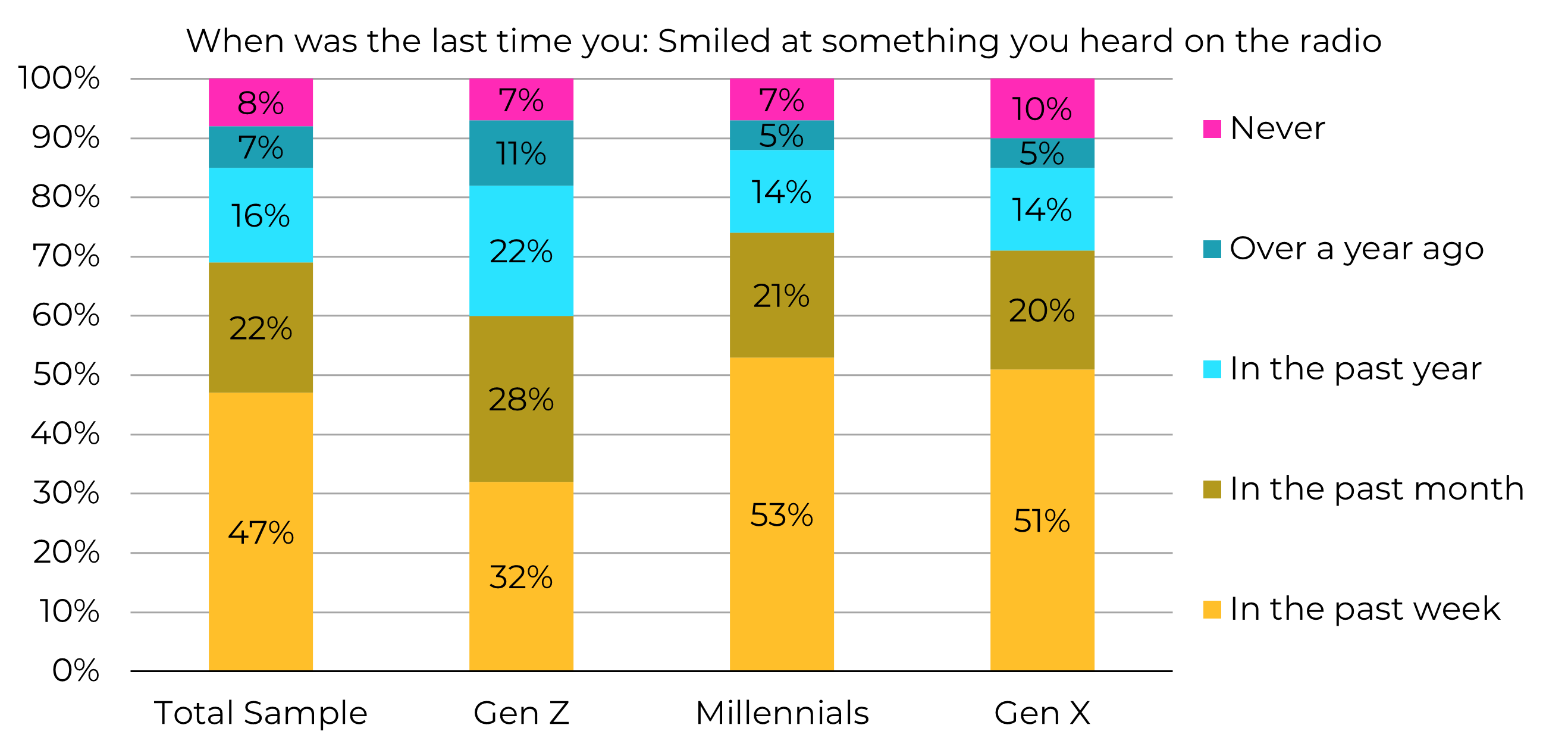Programming for Increased Endorphin Production

Among the measures in the annual UN-sponsored World Happiness Report released last week are three questions used to quantify positive emotions. They use questions about experiencing (1) laughter and (2) enjoyment during the previous day, and a question about learning or doing something interesting during the previous day. As I read those questions, I thought radio can do all of that.
It stands to reason that we’re all trying to accentuate positive emotions. Positive emotions are associated with increased endorphin levels. Endorphins are nature’s way of moving us toward feelings of pleasure – and away from feelings of pain.
The World Happiness Index also pays attention to life evaluations and negative emotions. Their life evaluation, the famous Cantril ladder, asks respondents to evaluate their current life using the mental image of a ladder, with their best-possible life at the top as a 10 and their worst-possible life at the bottom as a 0. Negative emotions are based on yes/no questions about emotions experienced during the previous day: worry, sadness, and anger.
There are lots of potential triggers of negative emotions. Some still worry about COVID (even as we hopefully make the turn from pandemic to endemic). And there are the worries associated with Russia/Ukraine, the economy, changing weather, the political climate, and on and on.
Lots of things help people increase endorphin levels, including listening to music – which is something radio does well at providing. I’ll posit that everything radio does can serve one of the three positive emotional aspects measured by the World Happiness Report: laughter, enjoyment, and learning something interesting. At their best, even commercials are enjoyable – some are even amusing – and all should try to be interesting.
In January’s NuVoodoo Ratings Prospects Study, 47% of the 2,278 respondents who regularly listen to broadcast radio say they smiled at something they’d heard on the radio in the prior week. Another 22% said they’d smiled at something they’d heard in the past month (which is a distant memory).

Remaining are the 31% of these listeners who said they’d smiled at something on the radio in the past year/over a year ago/never. (The fact that Gen Z radio listeners are fully twenty points lower than Millennials in recalling a smile from the radio in the past week is a subject for another time.)
Everything should have to check at least one of these boxes to make it to the air:
[-] Will it make a listener laugh?
[-] Will listeners enjoy hearing it?
[-] Will listeners find it interesting?
Running everything through those filters means you’re looking at the opportunities to improve even the perfunctory elements – ID’s, timechecks, liners, positioning statements, etc. Every one of them is an opportunity to connect with a listener, to make them smile, to give them an extra moment of pleasure, to inform them about something they’d find interesting.
It means thinking about your programming in terms of smiles per hour. If your efforts succeed often enough, your station’s programming will more regularly release endorphins for listeners – and they’ll keep coming back, looking for another endorphin hit. Addictive radio. There’s a worthy goal.




